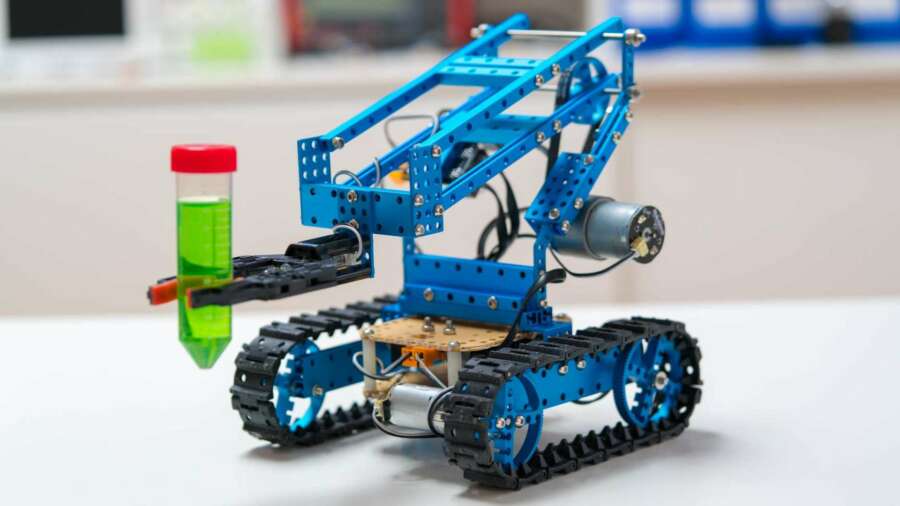
By Simon Perks, Head of Robotics and AI, Agilisys
Doing more with less
In an environment of tightening budgets and rising expectations, it’s critical for organisations to unlock the ability to do more with less to be able to compete. One technology that has a major role to play is Robotic Process Automation (RPA). When implemented correctly it has been proven to enable organisations to save time, effort and money, while also improving staff satisfaction and customer outcomes.
RPA is a form of business process automation technology using software robots (bots) or artificial intelligence (AI). In traditional workflow automation tools, a software developer physically produces a list of actions to automate a task and interface to the back-end system using internal application programming interfaces (APIs). In contrast, RPA systems develop the action list by watching the user perform that task in the application’s graphical user interface (GUI), and then performs the automation by repeating those tasks directly in the GUI.
A refocusing of time
A key application of RPA is to automate repetitive and time-consuming tasks that would otherwise require human interaction. This could be anything from compliance reporting to customer notifications, order processing to supplier management. By doing so, organisations can free up around 30% of their staff, allowing them to refocus their time on other more valuable, important and people-orientated tasks. Recent research suggests RPA has the potential to slash costs by up to 80%. Better still, RPA doesn’t make mistakes – ensuring greater accuracy and eliminating wasted time and effort.
One organisation I know has used RPA to revolutionise their business support processes. They found that they could reduce the time it takes to assess claim forms from 15 days to just 24 hours. Where a person would previously need 12 minutes to process a form, the virtual worker was able to do it in three. Considering the team faced some 1,500 digital applications daily, that meant the team saved about 300 person-hours per day.
By embracing automation, organisations can work faster, smarter and more cost-effectively, while transforming the staff and customer experience for the better. Essential services can operate around-the-clock, process-driven tasks take far less time, and staff can resolve more problems, more quickly and more effectively.
Start small
While RPA shouldn’t be used as a sticking plaster for poor processes, most organisations will need to take small, tactical steps at first, so the initial focus will likely be on obvious problems or inefficiencies. The goal should be to prove the technology works on a small scale and generate a fast return on investment: driving savings, freeing up capacity and so on. Find the best processes for proof of concept automation by heat-mapping demand and identifying organisational bottlenecks. Ideally, look for high-volume, low complexity processes which don’t have a lot of decision points or exceptions and will also generate great value for staff and customers alike.
When senior leaders see RPA’s benefits, they’ll inevitably start looking for opportunities to do more. With growing support, organisations can think bigger and begin moving towards full-scale service transformation.
Take your workforce with you
Ordinarily, redesigning services stops at examining technologies and processes. However, RPA also has huge implications for the workforce, so change must be communicated and positioned carefully. Consider the ingrained culture and don’t underestimate the time and effort needed for people to become open to new ways of thinking and working. Organisations must demonstrate a deep, long-term commitment to upskilling and preparing their workforces not just for immediate change, but a continuing digital journey.
Accelerating technology change means the need for transformation is inevitable. The later it’s left, the greater the pressure. Without RPA, organisations will find themselves steadily becoming less competitive. When transformation becomes impossible to put off, it will then need to be faced on tighter timescales, under greater financial pressure and with no margin for error.
Ultimately, RPA helps organisations prepare for the future. Whatever technologies are adopted in the coming years, they can be automated confidently without any development or integration work. As such, RPA helps future-proof the organisation and eliminates the need for expensive in-house software development skills.
Impact on the bottom line
Organisations today shouldn’t wait too long bring robots into the technology toolkit. With technology evolving faster than ever, the need for transformation across all industries is inevitable. Due to the pandemic this transformation has only accelerated. RPA reduces costs; increases speed, accuracy, and consistency; improves quality and scalability of production. Plus, it can provide extra security, especially for sensitive data.
However, a word of caution. Automating repetitive activities won’t replace the ingenuity and intuition you find in your staff. It will simply allow them to use these very human qualities at work more, rather than pouring time into business services processes. RPA doesn’t replace staff, rather it empowers them to undertake the tasks that have the most impact on the bottom line.
Robotics, alongside artificial intelligence is often a term that is feared within organisations, with the worry that eventually it could lead to there no longer needing for human engagement. However, the reality is that implementing RPA into an organisation does not replace the human element but enhances it.


